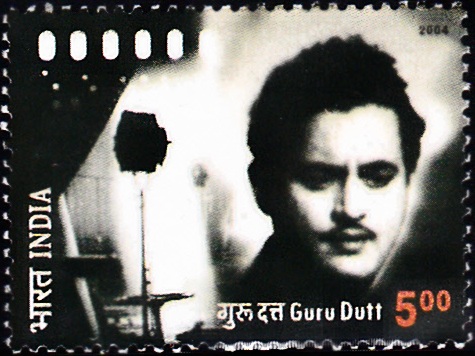
Guru Dutt
A commemorative postage stamp on Guru Dutt Shivshankar Padukone, an Hindi film director, producer and actor :
Issued on Oct 10, 2004
Issued for : The Department of Posts honours the unique legacy of Shri Guru Dutt through issue of this commemorative postage stamp.
Credits :
Stamp & FDC : Sankha Samanta
Cancellation : Alka Sharma
Type : Stamp, Mint Condition
Colour : Multicolour
Denomination : 500 Paise
Stamps Printed : 0.6 Million
Printing Process : Photogravure
Printer : India Security Press, Nasik
Name : Vasanth Kumar Shivashankar Padukone
Born on Jul 9, 1925 at Bengaluru, Karnataka, India
Died on Oct 10, 1964 at Mumbai, India
About :
- The 50’s was undoubtedly the golden era of Hindi films blessed with directors and artistes who could stamp their individuality on their work. One such personality who carved a niche for himself as a director, actor, and producer in the decade, was Guru Dutt Shivshankar Padukone, popularly known as Guru Dutt. His films had a uniqueness, a brooding intensity, so much so that a single frame of his work could be identified as his own.
- Guru Dutt was born on July 9, 1925 in Bangalore. His father Shivshankar Padukone worked as a school headmaster and then in a bank in Bangalore, and his mother Vasanthi was a school teacher. He had two brothers and two sisters.
- He had his early education in Calcutta. Financial constraints did not allow him to study further than matriculation which he completed in 1941. His creative instincts were manifest from a young age. He was interested in photography and a natural inclination for dancing and music especially Hindi and Bengali folk music. He joined the ‘Uday Shankar India Culture Centre’ in Almora. After his dance training, he got a break in films as a dance director on a three-year contract at Prabhat Films, Pune when along with choreography, he assisted directors otherwise and even acted in small some roles. After his contract with Prabhat was over he managed to get a job as assistant director to Amiya Chakravarty, a leading film director at the time, in his film ‘Girls School’, and in 1950 he assisted Gyan Mukherjee in Bombay Talkies film ‘Sangram’.
- Finally in 1951, he was called upon by his friend Dev Anand, to honour a promise made when they were working together at Prabhat, to direct ‘Baazi’, a crime thriller. ‘Baazi’ was a huge success and was a trendsetter in the genre of crime films. Most of the songs for the film were sung by Geeta Roy a star singer at that time. Guru Dutt and Geeta Roy met during the song recordings of ‘Baazi’ and fell in love, which culminated in marriage on 26th May 1953.
- The decade of the 50’s and early 60’s saw him as a director as well as an actor and producer for a number of films. ‘Aar Paar’ released in 1954 established Guru Dutt as a director to reckon with, followed by some of his best works like ‘Mr. and Mrs. 55’, ‘Pyaasa’ and ‘Kaagaz Ke Phool’. But ‘Kaagaz Ke Phool’ was a dismal failure at the box office and a dejected Guru Dutt never directed a film again, though he continued to produce films and act in both home and outside productions. In fact soon after, he produced and acted in ‘Chaudhavin Ka Chand’, which was an instant success and helped Guru Dutt recoup all the losses that he had suffered in ‘Kaagaz Ke Phool’, and ‘Sahib Biwi Aur Ghulam’ won the President’s silver medal as well as the Film of the Year award from the Bengal Film Journalists Association besides going to the Berlin Film Festival.
- Apart from his own productions, Guru Dutt acted in outside productions like ‘Twelve O’clock’, ‘Sautela Bhai’, ‘Bahurani’, ‘Bharosa’, etc.
- On October 10, 1964 the Hindi film world suffered a great loss with demise of Guru Dutt.
- As a director Guru Dutt was a perfectionist who never compromised on quality. He created a unique atmosphere through his sense of music, unique picturization of songs, subtle but intelligent dialogues, novel themes, depth of his characters, excellent use of lighting with light and shade, and superb shots sometimes followed by close ups of actors highlighting their expression which went beyond the merely narrative function and made an impression uniquely identified with their creator. He also introduced the use of long focal length lenses, and 100 mm as well as 75 mm for close ups in Indian films. According to his one-time assistant who went on to become a successful director, in his own right, Raj Khosla. “His ambition was not just to make a good film or be one of the top film makers. He aspired to make a great film, a different film and he wanted to be the best film maker. He always wanted things in absolute terms. Be it acclaim or success. He would settle for nothing less. Film making was an obsession with him”.
- Text : Based on material given by the proponent.



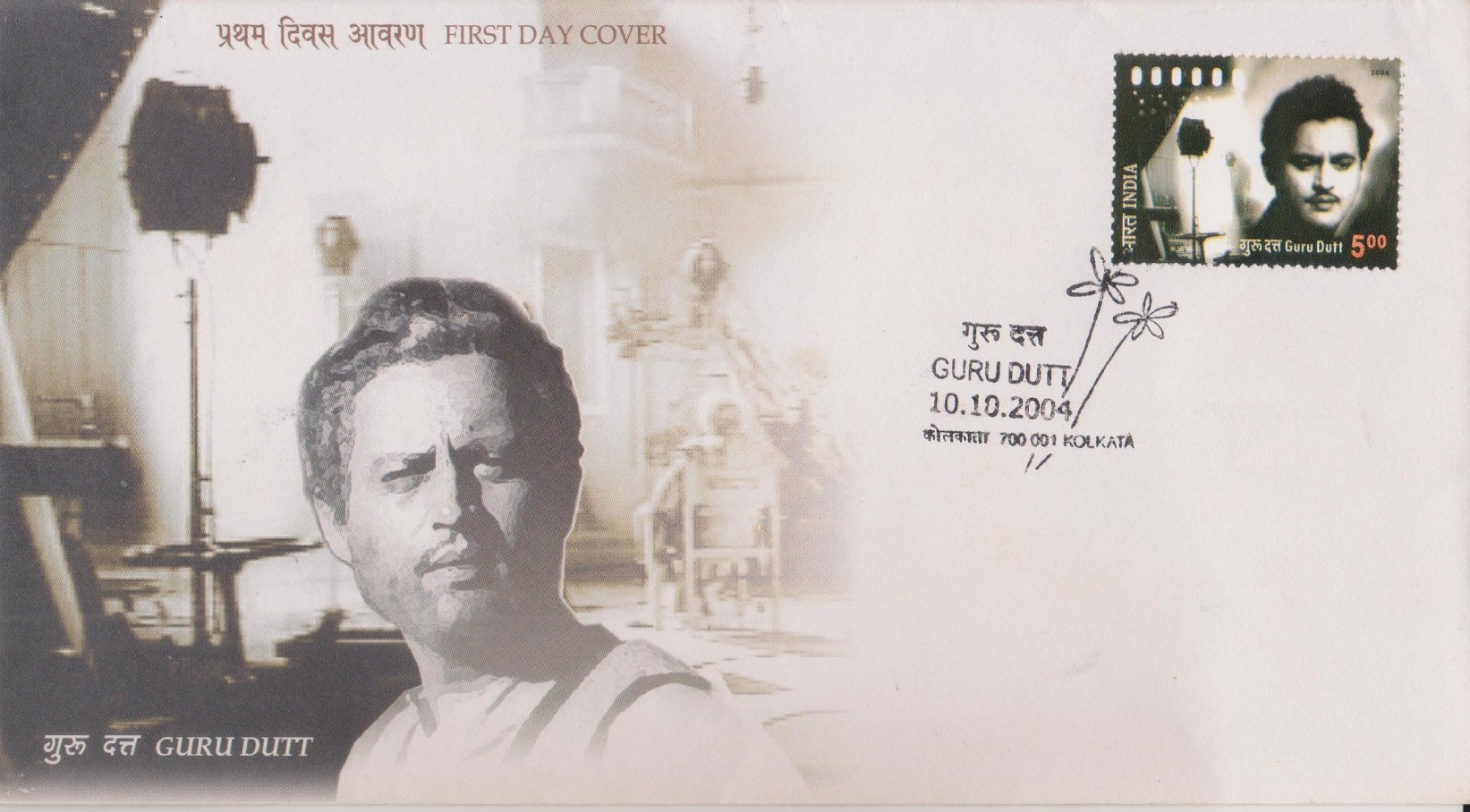 Issued by
Issued by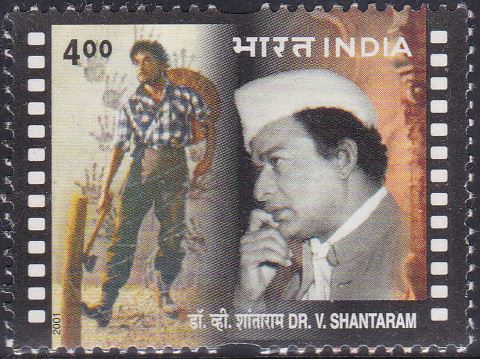
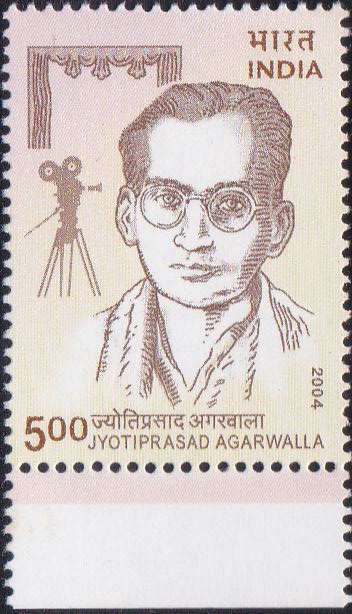
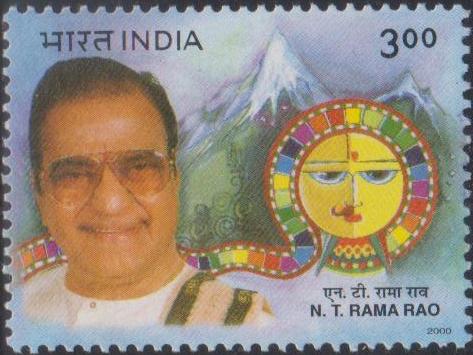
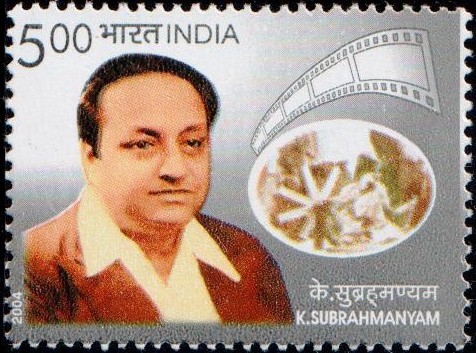
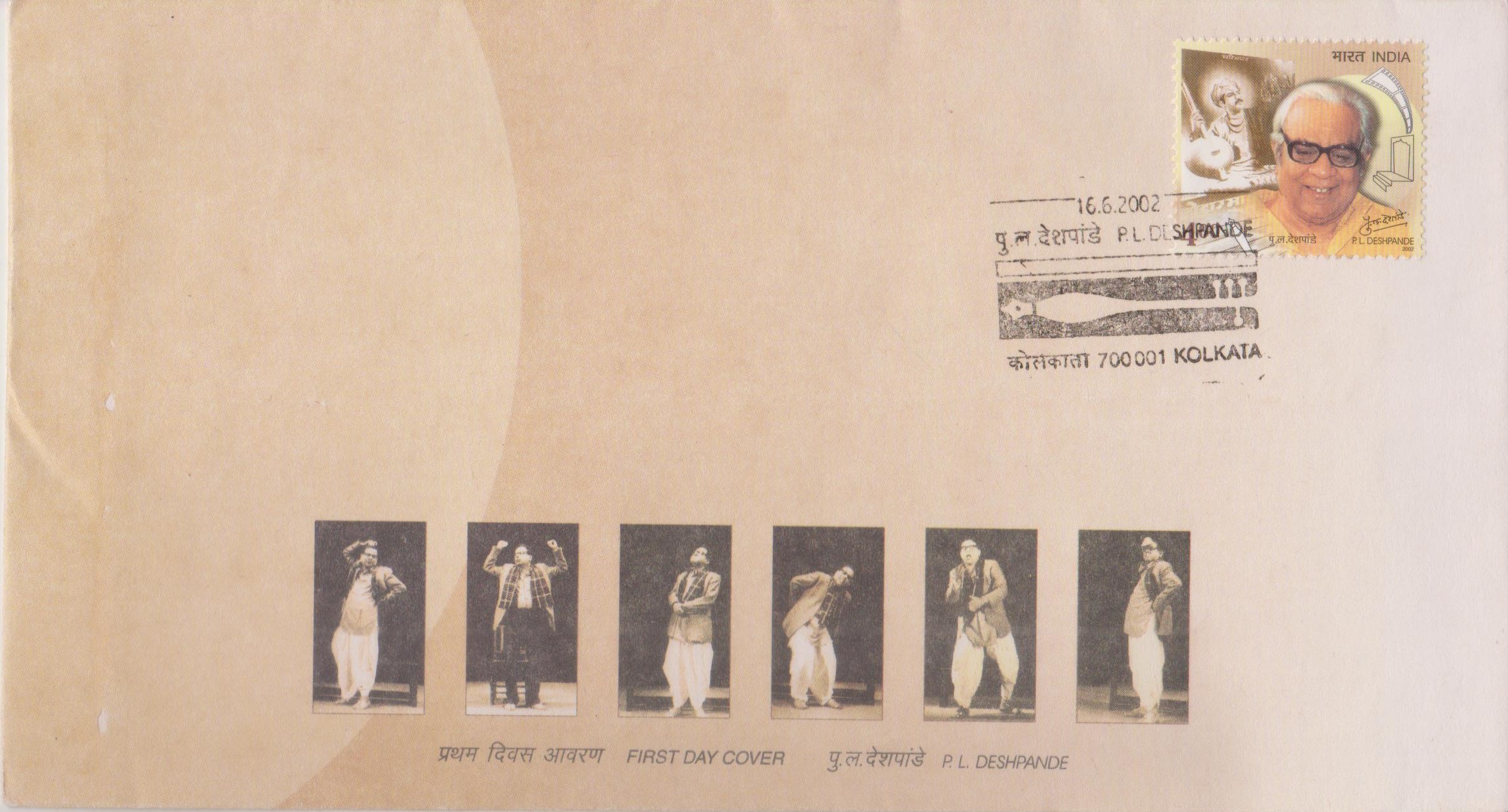
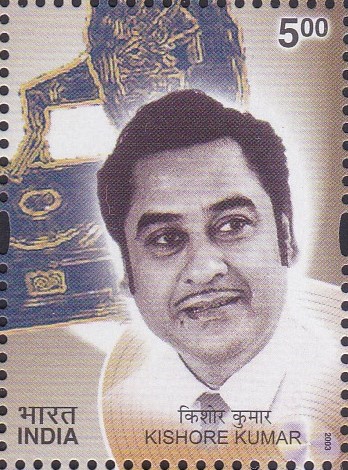
[…] whom she formed a great on-screen romantic pair. It was her great spontaneity and comic timing in Guru Dutt‘s “Mr. and Mrs. 55“, which saw her evolve and mature as an actress. It was this […]
[…] songs in the 1951 film ‘Baazi‘, he became a household name. It was, however, left to Guru Dutt, to fully exploit and portray the range and potential of Sahir in “Pyasaa“, in 1957. […]
[…] Pujari, Talash, Abhiman, Anurag, Kalapani, Taxi Driver, Munimji and so on. He also gave music for Guru Dutt classics Pyaasa (1957) and Kaagaz Ke Phool (1959) and he was right on target with ‘Jinhe […]